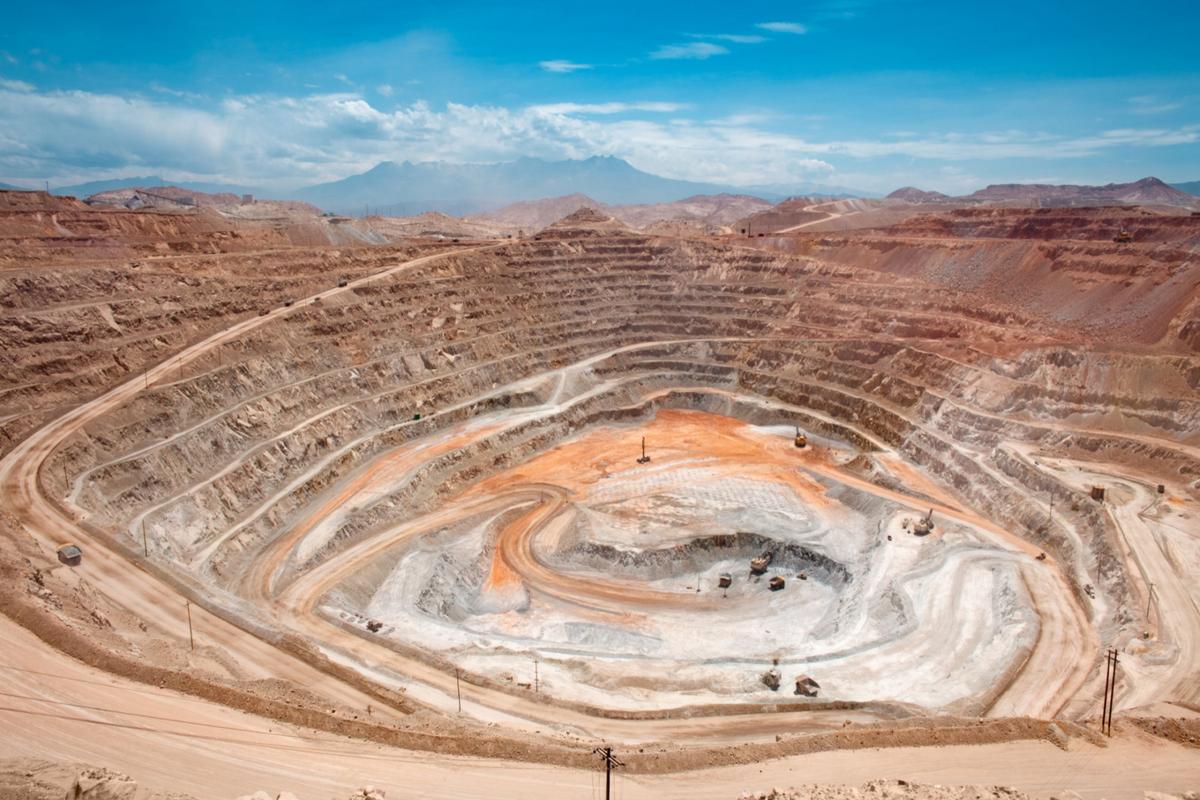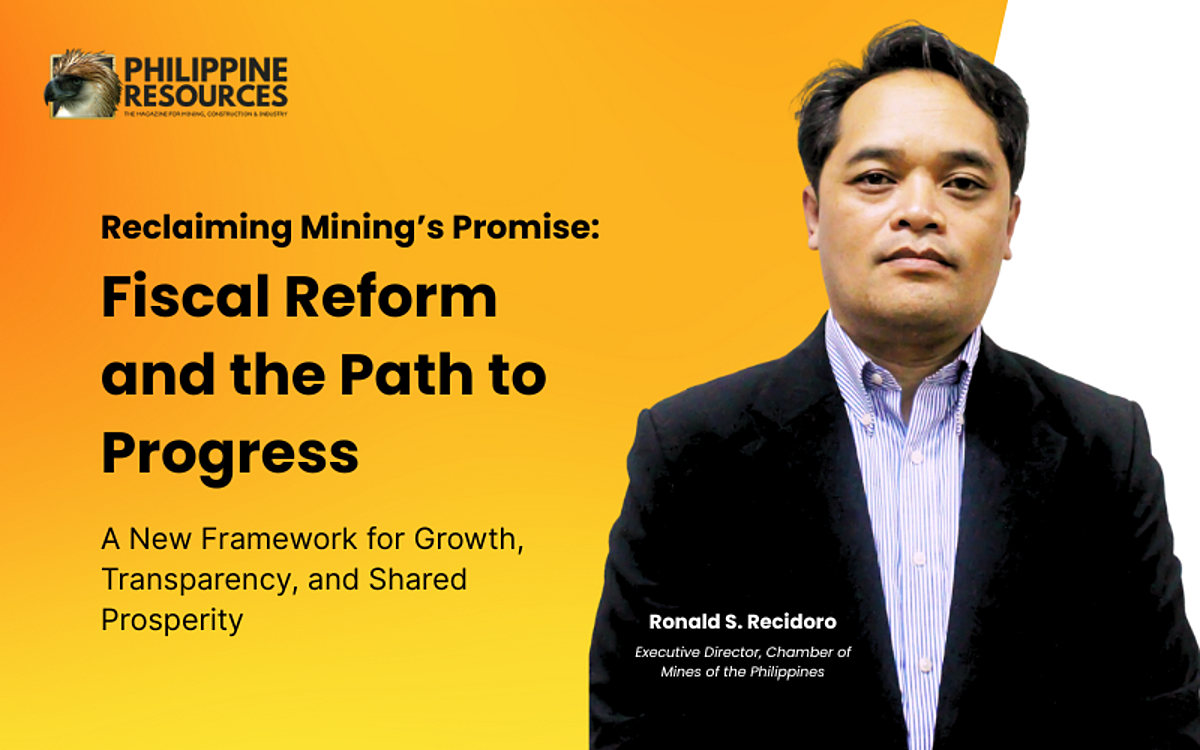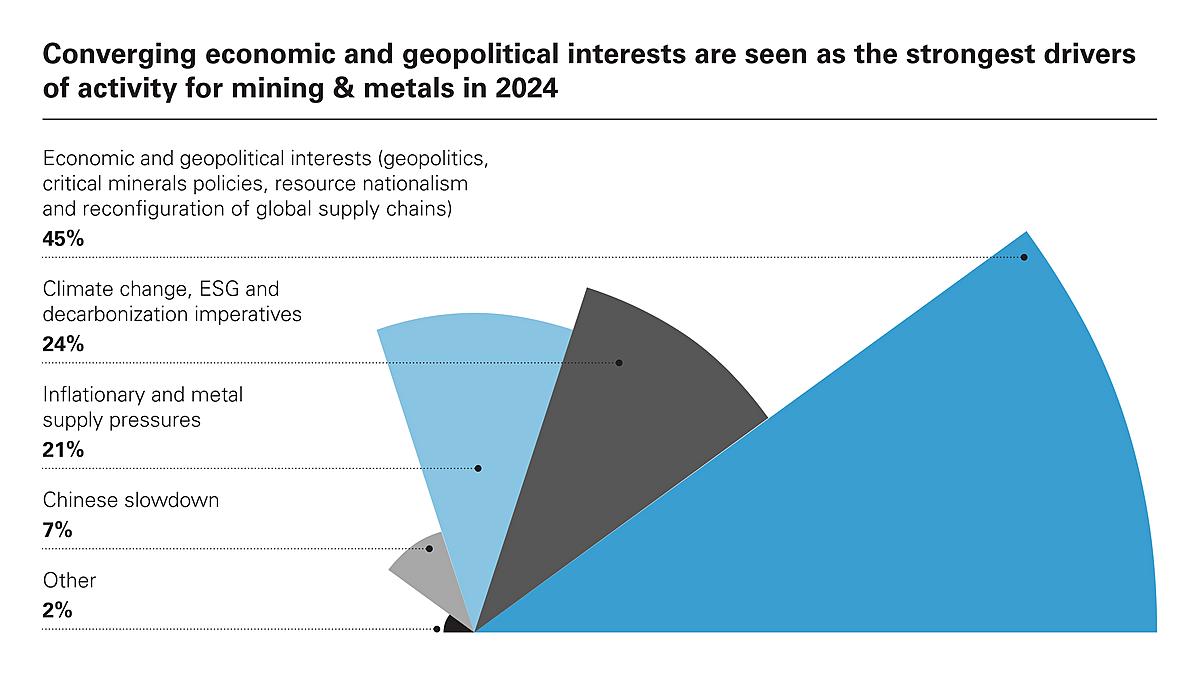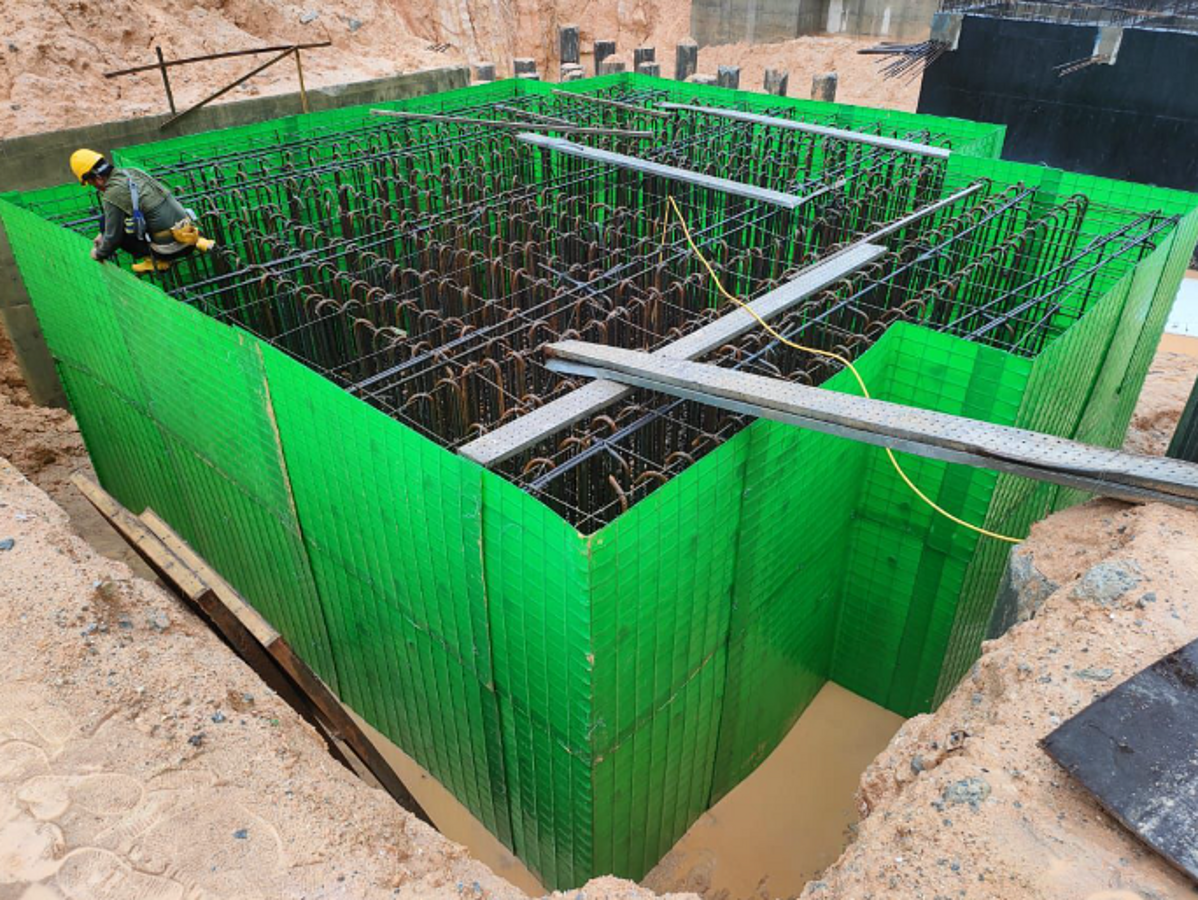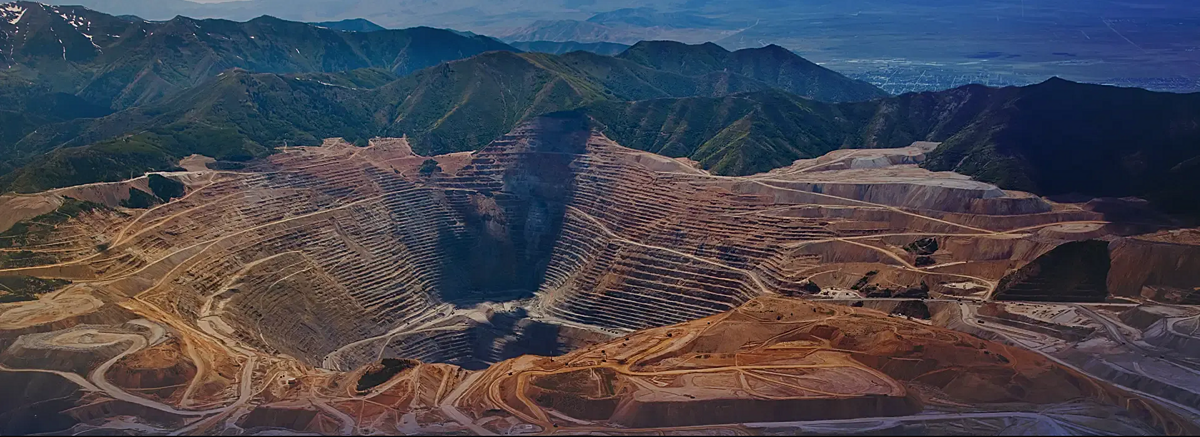The year 2022 saw a myriad of challenges as the Russian war on Ukraine, inflation, market volatility, food shortages, rising energy prices, and lingering pandemic impacts continue to shape global markets. The early part of last year was a robust period for the metals and mining sector. The industry was buoyed by record high prices for some commodities, supply chain constraints, and energy transition-related demand for some minerals.
However, macroeconomic conditions deteriorated going into midyear and expected to persist into early 2023. This led to weakening near-term demand expectations and a downside risk to the metals and mining sector as many commodity prices slide and equity market support weakens.
The Russia-Ukraine conflict and the souring relationship between the U.S. and China headline geopolitical and trade tensions which will have effects on the global markets throughout the coming year. The Russia-Ukraine war resulted in higher energy prices driving inflation and subdued demand for industrial metals particularly in Europe.
China, the world’s second largest economy and a steady force in global trade, reopened its economy with Xi Jinping’s reversal of zero-COVID restrictions. China’s reopening will unleash a flood of household spending and consumption, which will also impact the economies of its trading partners. However, tensions in the South China Sea and Taiwan Strait will hound US-China relations. A brewing conflict in the region can cause instability, which will spook investors in the mining and energy industry.
While many experts are projecting inflation to ease off this year as the pandemic weakens, S&P Global Ratings downgraded its GDP growth forecasts for its global growth expectations. Global inflation is expected to fall in 2023 and 2024 but will still be above pre-pandemic levels. The U.S. Federal Reserve implemented aggressive interest-rate hikes to tame inflation. The support lent to the U.S. dollar weakened other currencies causing high dollar-denominated commodity prices.
The threat of a global recession driven by supply chain issues arising from the COVID-19 pandemic will be the challenge in 2023. The world economy saw record-high inflation as the top concern last year. The broad sentiment among financial experts is that recession in 2023 is inevitable as higher prices due to inflation will give way to an economic downturn. However, a few analysts now feel that the U.S.—and possibly Europe—could narrowly avoid recession as inflation pressures started to abate. The rise in central bank rates to fight inflation and Russia’s war in Ukraine will continue to affect economic activity. Hopefully, as 2023 progresses, central banks will be able to rein in on inflation.
Global Mining Sector Outlook
The outlook for the global mining sector has turned negative due to slowing economic growth, says Moody’s Investors Service. The rating agency said it revised its global outlook for the mining sector from stable to negative, citing expectations that cash flows and profits will decline in 2023 due to weak demand for metals and mining commodities arising from slowing economic growth.
Inflation is also expected to pressure the metals markets and industrial commodities. S&P Global said that with inflation creeping up, metals prices have corrected from their recent highs and expected to fall further into 2023. Softening demand, stronger supply and weaker sentiment will further contribute to the downward pressure.
The construction sector and disrupted property markets will be a drag on global demand for copper, iron ore, steel and base metals. U.S. real estate data show a downward trend in new construction and a general downturn in the housing market while the Chinese real estate market remain sluggish despite various government infrastructure initiatives.
Meanwhile, supplies of copper, aluminium, lead, zinc, iron ore and steel, among others will post higher growth rates than in 2022. For precious metals, Moody’s noted that gold and silver prices are both declining “as higher interest rates and a stronger U.S. dollar” have curbed their appeal as safe haven investments. However, inflationary pressures and supply-chain constraints are showing signs of easing which could mean that global economic slowdown is less severe than expected.
Decarbonization, Clean Energy Transition, and Net Zero Goals
Concerned on climate-related risks have slowed down as the world grapples from the outcome of the Russia-Ukraine war which resulted in high energy prices and inflation. However, last year saw a number of mining companies announcing investments and joint ventures into large scale renewable projects involving the installation of solar and wind facilities, upgrade of transmission networks, and installation of large-scale battery storage.
Global mining leaders are also calling for the acceleration of the production of minerals needed to help reduce carbon footprint and meet net zero targets for carbon emissions. According to the latest global report from KPMG, “Sustainability on the horizon – the prospects of a net-zero future for metals and mining companies”, metals and mining companies are vital if the world is to reduce its reliance on fossil fuels.
Nevertheless, miners face a number of obstacles to reach their net zero goals, the largest of which are the difficulty in measuring progress and lack of resources to bring them about. Also, achieving these net-zero ambitions will require a more realistic and balanced strategy.
The KPMG report also states that the current transition away from fossil fuels will require a rapid increase in the number of electric vehicles (EV), thus considerable critical minerals will be needed. The production of battery materials – nickel, cobalt and lithium – will continue to forge ahead, following double digit-growth in 2022. KPMG estimates that more than 2 billion EVs will be needed to be manufactured to accommodate world demand and fully transition away from internal combustion engine vehicles by 2050. Energy transition efforts will also drive up demand for iron ore, zinc and copper. A recovery in the automotive sector and in low-carbon energy could help offset some of the demand weakness in other consumer-led segments. However, battery component supply pipelines will struggle to keep up with such a demand.
Green technologies require critical minerals which are often challenged by geopolitical constraints. Given that the price of critical minerals has surged in 2022, the incentive to invest further in their production and circularity remains very high. Mining companies are investing in and developing new technologies to support decarbonization plans and increase productivity.
Two technologies are expected to be of wide use in 2023 - drones and blockchain. Drones will be increasingly used to support exploration, surveying, mapping, monitoring site safety, stockpile management, blast analysis and reviewing tailing dams. At the same time, blockchain technologies will continue to support the traceability and accountability of supply chains.
ESG
Ernst and Young reported that environmental, social and governance (ESG) remains the top risk and opportunity for mining and metals companies in 2023. While ESG is expected to have broadening scope and complexity, it is now firmly integrated within corporate strategies due to its impact on almost every aspect of mining operations. Some of the areas for ESG improvement — improving diversity, equity and inclusion, are not new and remain to be major challenges. On the other hand, the issues of mine closures and rehabilitation will require a longer-term and more strategic view. ESG’s scope is broadening and pressure is growing to improve reporting and transparency. Even governments are increasing their energy transition efforts and addressing ESG concerns.
Exploration
The exploration industry is greatly influenced by metals prices and financing conditions. As capital costs and energy prices are expected to rise, miners are left with lower excess cash reserves to spend on exploration. Difficult financing conditions amid recession fears will also impact exploration according to a report of S&P Global. Global inflation, geopolitical instability, and fears of recession are taking their toll on commodities. Metal prices have fallen off their highs and markets have trended downward resulting in investors turning away from the mining sector.
Interest in energy transition metals, however, will support exploration budgets for copper, nickel and lithium, although decreases for copper and nickel are expected. With the increasing uncertainty in the global marketplace, exploration budget will continue to focus more at mine sites and advanced projects than in grassroots projects, which may result in a notable decline in new major discoveries.
Energy
Energy was the S&P 500’s top performing sector two years in a row and many experts feel that more growth is on the horizon. Wood Mackenzie is forecasting a brisk return to oil demand growth next year, driven by the easing of COVID-19 restrictions in China and the rising use of petrochemical feedstocks. Meanwhile, there will be a slowdown in LNG contract signings despite a busy 2022 for LNG contracting. In 2023, LNG contracting activity will slow down even as Chinese companies continue to buy and US independent upstream and midstream players secure deals to access global LNG markets. Europe will also continue to diversify its energy imports away from Russia and source liquefied natural gas from the U.S. to help fill in the demand.
Meanwhile On the Homefront
In their numerous roadshows abroad, the economic managers of the current government have affirmed support for mining as part of the country’s growth agenda. At the same ttime, Department of Environment and Natural Resources (DENR) Secretary Ma. Antonia Yulo-Loyzaga said her agency will undertake a comprehensive review of mining laws, its existing legal framework and current policies and practices that to her are “somewhat dated”. Sec. Yulo-Loyzaga further said that the DENR is eyeing to “build the technical capacities to support that direction and make sure that the social and physical advances in science and tech, as well as our current context developmentally are now adequately perfected in an updated policy and legal system.” Sec. Yulo-Loyzaga has also been quoted as suggesting “a range of actions including a progressive look at taxing exports” of raw nickel. Policy statements indicating another review of mining laws and imposition of more taxes will certainly be sending the wrong signals to investors.
Conclusion
The metals and mining sector will be facing the global economy in 2023 cautiously, fully aware of the risks if the pressures of inflation, global conflicts, and high energy prices of last year will continue to persist. The positive news is that clean energy transition - rising electric vehicles sales, the shift towards renewable energy technologies, and related transmission and distribution requirements will expand market demand. This growing demand will however be tempered if mineral-endowed countries like the Philippines fall prey to resource nationalism. On the other hand, the industry must strictly adhere to responsible mining and strike a balance in their ESG responsibilities of environment protection, uplifting local communities, and dealing transparently with the government and other stakeholders. The industry is precariously looking forward to a 2023 that brings more stability, and less economic and political upheavals.
Fernando “Ronnie” S. Penarroyo specializes in Energy and Resources Law, Project Finance and Business Development. He is also currently the Chair of the Professional Regulatory Board of Geology. He may be contacted at fspenarroyo@penpalaw.com for any matters or inquiries in relation to the Philippine resources industry and suggested topics for commentaries. Atty. Penarroyo’s commentaries are also archived at his professional blogsite at www.penarroyo.com
References:
Aluminum International Today, Metals and Mining industry pessimistic about global growth, with over half more pessimistic than CRU forecasts, https://aluminiumtoday.com/news/metals-and-mining-industry-pessimistic-about-global-growth-with-over-half-more-pessimistic-than-cru-forecasts
Bird and Bird, Energy Outlook 2023: Mining & Minerals, https://www.twobirds.com/en/insights/2023/global/energy-outlook-2023-mining-and-minerals
Crooks, Ed, Ten Predictions for 2023, 16 December 2022, https://www.woodmac.com/news/opinion/ten-predictions-for-2023/
Freele, Elizabeth and Dekker, Rachel, Mining’s top ten ‘S’ trends in ESG for 2023, 17 January 2023, https://www.mining.com/minings-top-ten-s-trends-in-esg-for-2023/
KPMG Mining Outlook 2023: Prospects of a net-zero future for metals and mining companies, 30 November 2022 https://kpmg.com/au/en/home/media/press-releases/2022/11/brighter-prospects-mining-sector-transforms-towards-net-zero-30-november-2022.html
Langton, James, Global mining sector outlook turns negative: Moody’s, 22 September 2022, https://www.investmentexecutive.com/news/research-and-markets/global-mining-sector-outlook-turns-negative-moodys/
Mitchell, Paul, Top 10 business risks and opportunities for mining and metals in 2023, 26 September 2022, https://www.ey.com/en_gl/mining-metals/risks-opportunities
Rivera, Danessa, DENR to Visit Mining Laws, Philippine Star, 08 December 2022, https://www.philstar.com/business/2022/12/08/2229235/denr-revisit-mining-laws
Routley, Nick, Prediction Consensus: What the Experts See Coming in 2023, 11 January 2023, https://www.visualcapitalist.com/predictions-2023/
S&P Global Market Intelligence, The Big Picture - 2023 Metals and Mining Industry Outlook, 10 November 2022, https://www.spglobal.com/marketintelligence/en/news-insights/research/the-big-picture-2023-outlook-for-metals-and-minin

